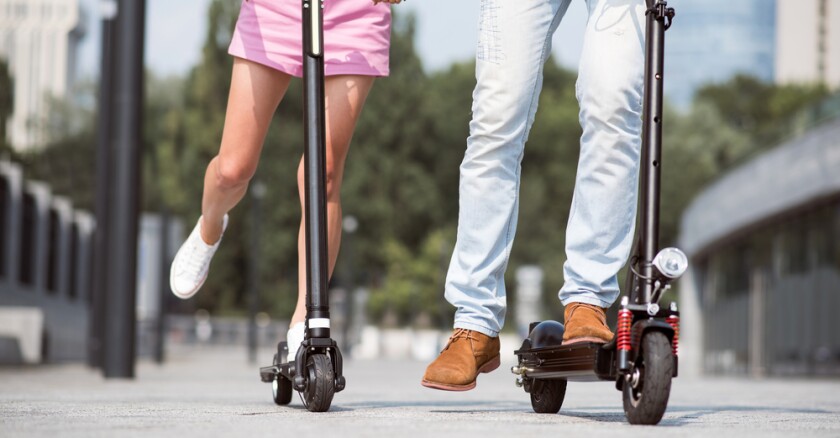As of the end of 2021, there were at least 110 cities with scooter-share programs, according to the most recent available data from the U.S. Bureau of Transportation Statistics (BTS). Scooter-share programs are slightly more common than bike-share systems, a trend that emerged at the end of 2020 and has continued.
Boulder partnered with Lime for its pilot. BTS data showed them to be the most popular scooter-share company for cities to partner with at the end of 2021.
David “D.K.” Kemp, senior transportation planner for the city of Boulder, said his city was initially late to the scooter market. When companies started dropping scooters in cities, Boulder made it clear that it wouldn’t be allowed. Kemp said the city wanted to wait for the industry to mature and for the city to develop regulations, like classifying scooters as “low-speed electric vehicles,” allowed in bike lanes but not on major streets.
“We were concerned with the safety and the sustainability of these devices,” said Kemp.
Now, as the city is piloting a scooter-share system on its east side, safety is still a concern. Boulder uses a “Vision Zero” planning strategy in the hopes of eliminating traffic fatalities altogether. While the city has had a few serious injury collisions involving scooters, it hasn’t had any fatalities. He cited the importance of having a network of bike lanes and multi-use paths in developing this strategy.
As early as 2019, scooters represented 63 percent of micromobility trips in the U.S., according to a report from the National Association of City Transportation Officials (NACTO).
"We have worked with a number of cities to help them shape the regulatory landscape in their respective markets," said Kyle Rowe, Spin's vice president of partnerships and policy in an email statement. "We find this collaboration helps us create an environment where our service can be most beneficial for the city and also supports a sustainable business on our side."
Rowe added that Spin has actually left markets in the past due to unfavorable regulatory conditions, such as if a city has mandates left over from a time when micromobility was subsidized.
"This regulatory climate generally isn’t conducive for a long-term, sustainable business," he said.
The rising popularity of scooter-share systems is happening alongside another trend in micromobility: the increasing ridership of bike-shares.
Like many facets of life, bike-share systems saw a pandemic-era slowdown, with riders completing fewer trips. But two years later this trend has reversed, with ridership levels surpassing pre-pandemic levels.
Kemp said Boulder has seen this increase firsthand, owing in part to the city’s shift to electric bikes and away from traditional bikes, which Kemp termed “acoustic bikes.”
“We subsidized the program for 10 years or so, but the nonprofit model was unstable,” said Kemp.
After the city sent out a request for proposals, they settled on BCycle, a company owned by Trek Bicycle, to operate the system for profit. In addition to some fees, the city now collects 15 cents per ride in the form of a fee.
“This gives us a little bit of a funding stream,” said Kemp, who added that these funds are restricted and are used to support the program, such as through spending on infrastructure, education, marketing or affordability programs.
Affordability is also a key issue in the private sector. Spin is piloting low-income equity programs in Pittsburgh and Bakersfield, Calif., which will lower the barrier to entry for some residents.
"Our Pittsburgh pilot will give up to 50 low-income residents in Pittsburgh free access to shared mobility and public transit services to study its effects on one’s socioeconomic progress," said Rowe. "Providing affordable and reliable transportation to all, otherwise known as universal or guaranteed basic mobility, is considered one of the main factors that can enable upward socioeconomic mobility."
These gains in microbility haven’t been mirrored in traditional public transit. Ridership on services like buses, subways and commuter rail still significantly lag behind their pre-pandemic levels. Total ridership on public transit, which doesn’t include micromobility systems, remains at about half of what it was before the pandemic.
The expansion of micromobility may not be to blame for public transit’s slowed pandemic recovery.
In a survey of ridership in six cities published in 2019, NACTO found that 9 percent of micromobility trips replaced trips on public transit. Scooter and bike-share trips replaced trips in cars or ride-hails 45 percent of the time and walking trips 28 percent of the time. Eighteen percent of trips wouldn’t have happened but for a scooter or bike-sharing, according to the survey.









